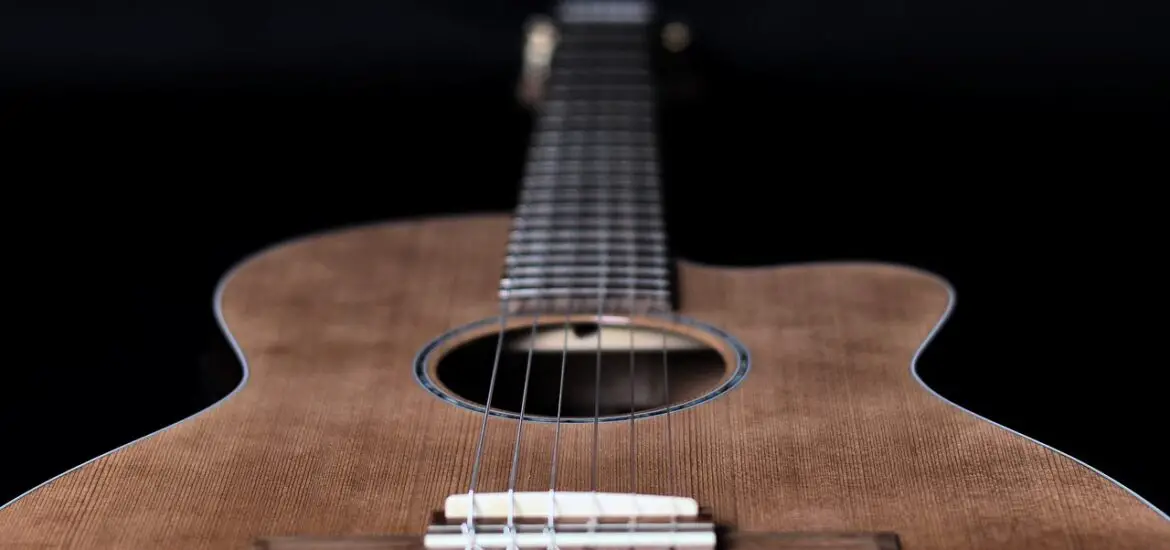If you’re a guitarist, you’ve likely pondered, “why replace guitar strings and how often you should do it?”. In this comprehensive guide, we will answer this crucial question and walk you through every step involved in replacing your strings.

Why Replace Guitar Strings – Understanding the Importance
Before you start replacing your guitar strings, you may wonder, “Why replace guitar strings at all?” The answer lies in the natural wear and tear that occurs with use. Over time, your strings accumulate a layer of grime consisting of dirt, oils from your fingers, and atmospheric elements like humidity.
This layer interferes with vibration, degrading the clarity and resonance of your guitar’s sound. Additionally, this accumulation causes the strings to become less responsive, increasing the effort needed to fret notes or chords. In short, old strings not only compromise sound quality but also make playing more challenging.
Signs Your Strings Need Replacing
Being proactive about string maintenance can go a long way. But how do you know when it’s time to change them? Here are some signs to look for:
Lack of Resonance: Your guitar doesn’t sound as vibrant as it once did. The notes don’t ring out as they should, which indicates a loss in tonal quality.
Difficulty in Tuning: You find that the guitar frequently goes out of tune, or the tuner struggles to find the pitch. This instability is often a sign of worn strings.
Visible Discoloration or Rust: Upon close inspection, you might see spots or areas where the string has visibly tarnished or even rusted. This is a surefire sign they need replacement.
Materials You Will Need
Before you begin, make sure you have the following items:
A New Set of Strings: The type of strings will depend on your guitar and your playing style.
Wire Cutters: You’ll need these to cut the old strings and trim the new ones.
String Winder: This tool makes the winding process much quicker.
A Tuner: An electronic tuner ensures your strings are at the correct pitch.
Removing Old Strings
Loosen the Strings: Use the tuning pegs on the headstock to loosen each string. Turn the pegs counterclockwise while playing the string until you feel the tension release.
Cut the Strings: With the wire cutters, carefully snip each string near the center of its length. This makes removal easier.
Unwind from Tuning Pegs: Take the loose ends of the strings out of the holes in the tuning pegs.
Remove from Bridge: On the body of the guitar, remove the remaining string parts from the bridge. This method may differ depending on your guitar type.
Read more guitar topics here – Guitar Questions: Get the Right Answers to Your Burning Questions
Installing New Strings
Insert the Low E String: Starting with the low E string (the thickest string), insert its end into the corresponding bridge pinhole on the guitar’s body.
Pull Until Taut: Make sure the string is pulled all the way through until you feel resistance or it’s taut.
Wind Around Tuning Peg: Lead the other end of the string towards the headstock and insert it into the hole in the corresponding tuning peg. Wind it around the peg at least three times manually.
Tighten: Use the tuning peg to tighten the string, making sure it winds neatly without overlapping turns.
Tuning and Stretching
Initial Tuning: After all the strings are in place, use your electronic tuner to adjust each string to its correct pitch.
Stretch the Strings: Grasp each string in your hand and give it a gentle stretch by lifting it a couple of inches away from the fretboard, then release.
Final Tuning: Retune each string using your electronic tuner. This “stretch and tune” process helps the new strings to settle in and stay in tune longer.
Final Thoughts: Why Replace Guitar Strings?
Now that you understand why you should replace guitar strings and how to do it, your guitar will thank you with a fuller, more vibrant sound. Happy playing!
